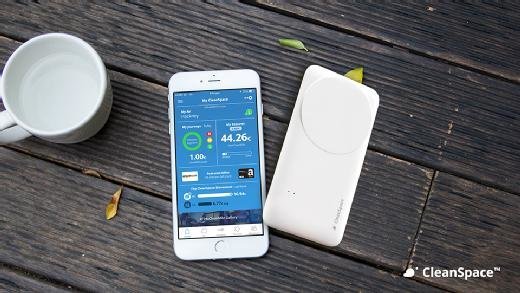
3dmentat - Fotolia
Free energy from radio waves could power the internet of things
A pocket-sized pollution monitor is one of the first applications to use free energy from Wi-Fi and mobile phone signals
A portable antenna capable of extracting energy from radio waves could provide an unlimited source of power for the vast array of sensors that will make up the internet of things (IoT).
It's possible the device, which was unveiled by former science minister Paul Drayson, will find applications in devices ranging from smoke detectors, to temperature sensors and wearable technology.
The IoT is set to create a demand for embedded sensors that will be far greater than the combined market for mobile phones, PC, tablets and wearable devices in the next four years, researchers have predicted.
Drayson’s device, known as Freevolt, is the result of five years of research and tens of millions of investment. It aims to harvest energy from Wi-Fi, mobile phone and broadcast signals to power the embedded sensors.
"Companies have been researching how to harvest energy from Wi-Fi, cellular and broadcast networks for many years. But it is difficult because there is only a small amount of energy to harvest, and achieving the right level of rectifying efficiency has been the issue – up until now,” said Drayson.
The device, developed by Drayson Technologies, uses an antenna to gather radio wave energy from Wi-Fi, mobile phone signals and broadcasts, and converts that into electricity.
The company showed demonstrations of a self-powered temperature sensor, and a radio beacon – which is used by retailers to send customised offers to shoppers' mobile phones when they enter a store – at the Royal Institution in London.
Read more about the internet of things
- Universal connectivity will yield insights in fields as diverse as aviation and hospitality, but will challenge conventional practices
- For years, the fridge has been the poster boy for the internet of things, but lack of commercial availability raises questions about the future
- The government’s chief scientific adviser has released his long-awaited review on the internet of things
Monitoring pollution
The company’s first commercial device will be a pocket-sized air-quality measuring station that helps people avoid areas of high pollution when they are travelling.
Drayson said that as someone with asthma and a keen advocate of electric vehicles, he had a personal interest in the technology.
“Information on air pollution is available, but many people don’t know how to access or use it," he said. "People are demanding more immediate and localised data on the quality of air that surrounds them."
The £65 device, known as CleanSpace (pictured, below) works in conjunction with a mobile phone to provide people with a personal record of their exposure to carbon monoxide – a proxy for pollution levels generally.
The results will be uploaded to the cloud in an anonymised form to create highly detailed pollution maps, offering information that could be used by planners to cut city pollution levels.
A mobile phone app will encourage people to reduce their carbon footprint by walking, or travelling by bike or electric car, in return for 'reward points' which can be exchanged for free cups of coffee or bike locks.

CleanSpace works in conjunciton with a mobile phone app, providing people with a personal record of their exposure to carbon monoxide
Early experiments have shown that pollution levels increase dramatically when buses arrive at bus stops, and that even office workers can be exposed to pollution when air conditioning systems draw in air from outside.
Drayson Technology’s business plan is to license the technology to sensor manufacturers and, if necessary, sell components. Drayson said he had plans to grow the company, which has backing from two major investors, into a multi-national business that will supply power technology to sensor manufacturers.
The company is also developing a flexible version of the technology that could be used to power wearable devices. Drayson said that in the future it would be possible to “paint” houses with the technology to power sensors embedded in the home.
Is it better than batteries ?
But questions remain around how much of an advantage the technology will offer over long-life batteries. The pollution sensor, for example, has a predicted lifespan of three to five years, comparable with a long-life battery.
The company has teamed up with companies including Halfords and BMW, which will help to fund the service and sponsor rewards. It has financial backing from Landsdowne Partners and Woodford Patient Capital.
Drayson plans to donate £5 for each device sold to charities including the British Lung Foundation, EarthWatch and Sustrans, which advocates sustainable transport.









